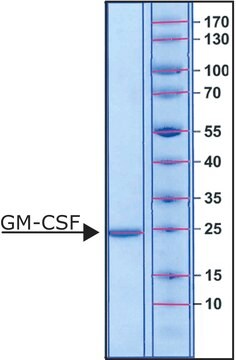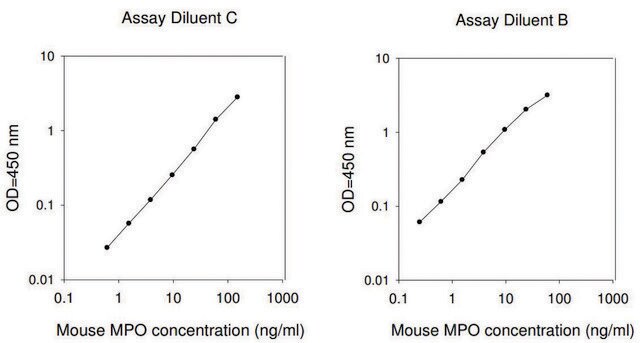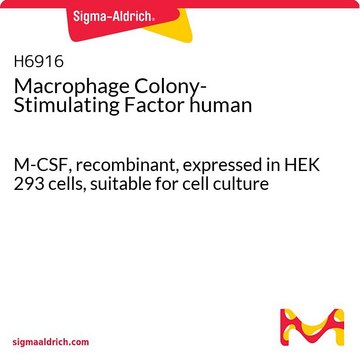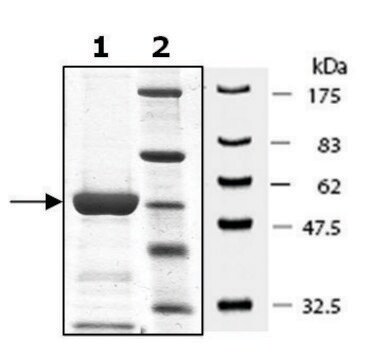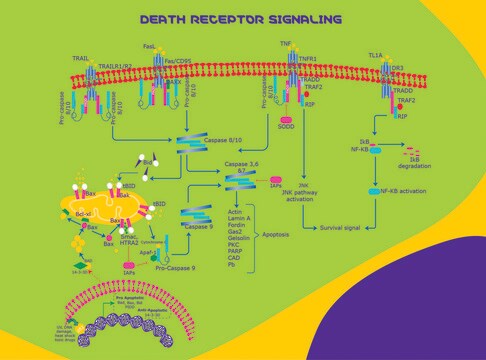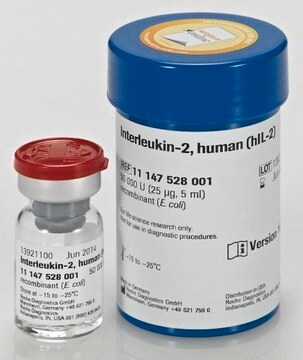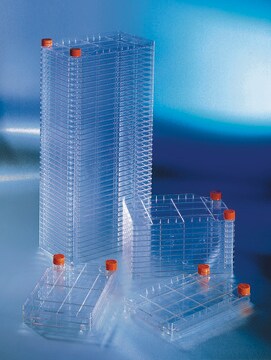推薦產品
生物源
mouse
重組細胞
expressed in E. coli
化驗
≥98% (HPLC)
≥98% (SDS-PAGE)
形狀
lyophilized
效力
10-100 ng/mL
分子量
~7.8 kDa
包裝
pkg of 20 μg
雜質
endotoxin, tested
NCBI登錄號
UniProt登錄號
運輸包裝
wet ice
儲存溫度
−20°C
基因資訊
mouse ... Cxcl1(14825)
一般說明
Growth-regulated oncogenes (GRO)/keratinocyte chemoattractant (KC) belongs to the growing inflammatory protein superfamily. KC is characterized with four conserved cysteine residues with a CXC motif.
Mouse KC (also known as mouse GRO-α) belongs to the C-X-C family of chemokines. Mouse KC is a 7.8 kDa protein containing 72 amino acid residues.
生化/生理作用
Growth-regulated oncogenes (GRO)/keratinocyte chemoattractant (KC) plays a vital role in wound healing and inflammation. In rat, serum levels of GRO/KC can be used as a predictive biomarker for inhibitory effect of chemopreventive agents on esophageal carcinogenesis.
外觀
Sterile filtered and then lyophilized without any additives.
重構
Centrifuge the vial prior to opening. Avoid freeze-thaw cycles.
Reconstitute in water to a concentration of 0.1-1 mg/mL. This solution can be diluted into other aqueous buffers.
分析證明 (COA)
輸入產品批次/批號來搜索 分析證明 (COA)。在產品’s標籤上找到批次和批號,寫有 ‘Lot’或‘Batch’.。
Multiple berry types prevent N-nitrosomethylbenzylamine-induced esophageal cancer in rats
Stoner GD, et al.
Pharmaceutical Research, 27(6), 1138-1145 (2010)
Cloning and sequencing of a new gro transcript from activated human monocytes: expression in leukocytes and wound tissue
Iida NAOKO and Grotendorst GR
Molecular Cell Biology, 10(10), 5596-5599 (1990)
Cloning and sequencing of a new gro transcript from activated human monocytes: expression in leukocytes and wound tissue.
Iida N A O K O, et al.
Molecular and Cellular Biochemistry, 10(10), 5596-5599 (1990)
Aimalie L Hardaway et al.
Clinical & experimental metastasis, 32(4), 353-368 (2015-03-25)
Increased bone marrow adiposity is a common feature of advanced age, obesity and associated metabolic pathologies. Augmented numbers of marrow adipocytes positively correlate with dysregulated bone remodeling, also a well-established complication of metastatic disease. We have shown previously that marrow
Yuan Sun et al.
The journal of pain : official journal of the American Pain Society, 15(8), 856-866 (2014-06-03)
Chronic opioid consumption increases postoperative pain. Epigenetic changes related to chronic opioid use and surgical incision may be partially responsible for this enhancement. The CXCL1/CXCR2 signaling pathway, implicated in several pain models, is known to be epigenetically regulated via histone
我們的科學家團隊在所有研究領域都有豐富的經驗,包括生命科學、材料科學、化學合成、色譜、分析等.
聯絡技術服務

